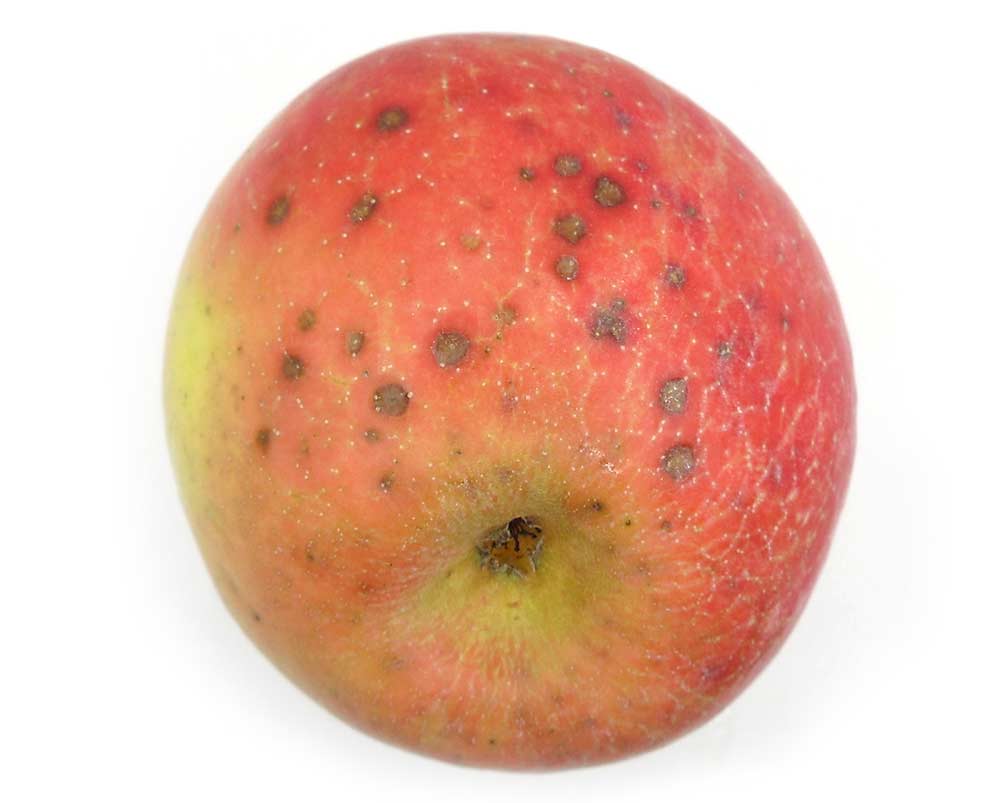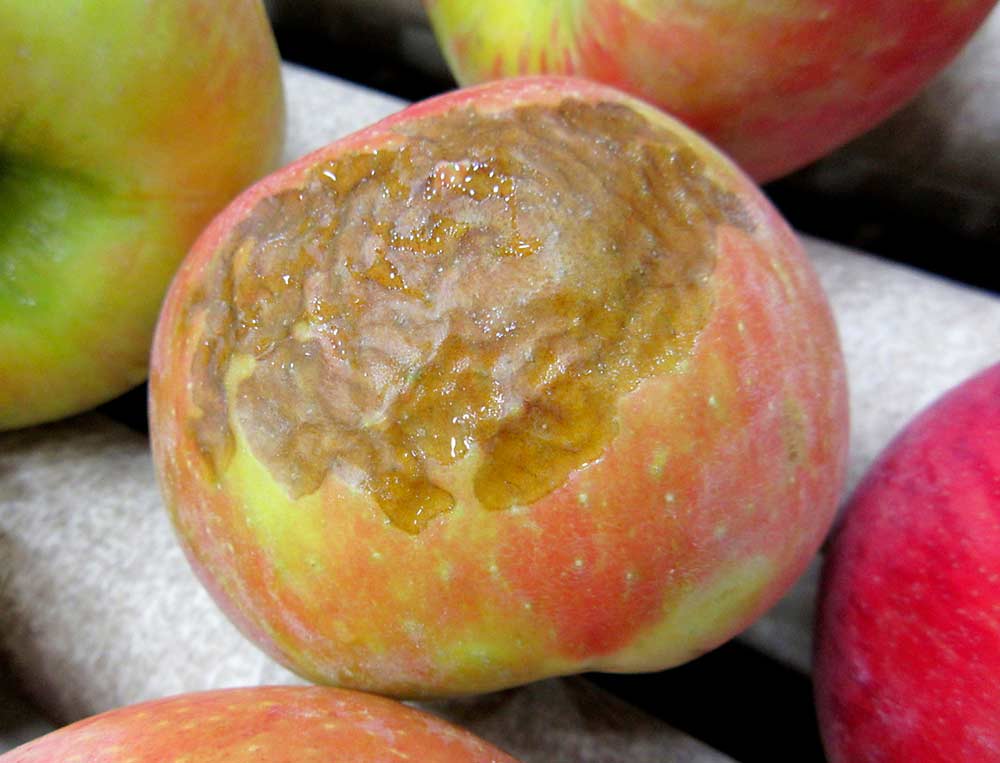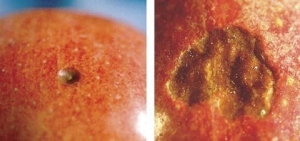
For a long time, lenticel breakdown and similar heat-related disorders were confined to the sunny climate of the Pacific Northwest, but growers in the warming Eastern apple states are starting to notice it in their own fruit.
And they’re wondering what to do about it.
A skin disorder of apples, lenticel breakdown presents as sunken brown circles around small natural openings in the cuticle, called lenticels. The disorder begins in the orchard but mostly appears after the fruit has been packed, making it an expensive problem for growers.
Michigan State University professor and postharvest specialist Randy Beaudry said new research on lenticel breakdown is “desperately needed.” He gave a presentation on the topic at the Great Lakes Fruit, Vegetable and Farm Market EXPO in December, but he had to base it on research done more than a decade ago by now-retired researchers Gene Kupferman of Washington State University and Eric Curry of the U.S. Department of Agriculture’s lab in Wenatchee, Washington. He also drew on European research.
Lenticel breakdown poses a growing problem for a number of varieties, including Gala, Honeycrisp, Minneiska (marketed as SweeTango) and EverCrisp. It’s related to blotch disorders such as leather blotch, also known as lenticel blotch, and seems to be more of a problem in hotter years, Beaudry said.

The Washington researchers found that lenticel breakdown varies tremendously from orchard to orchard and season to season. The riper and softer the apple and the longer it’s in storage, the greater the incidence. A grower with an orchard suspected of being sensitive to lenticel breakdown should harvest those apples early and store them for shorter stints, Beaudry recommended.
“The longer fruit sits on the tree, the more susceptible it is to lenticel breakdown,” Beaudry said.
Galas tend to be more susceptible at lower calcium levels, he said.
“It’s not night and day, but it does look like calcium applications can be helpful,” Beaudry said.
According to the Washington research, presized fruit has a higher incidence of lenticel breakdown than fruit that is not presized because of the wetting events involved in the presizing process. Other packing-line factors involved include differences in temperature (putting cold fruit in hot water) and chemical concentrations (the higher the concentration, the greater the risk), Beaudry said.
“Really focus on the chemistries being used in your systems,” he said. “Soaps, waxes, detergents — even materials you wouldn’t think cause damage can cause it.”
Carolina Torres, WSU’s endowed chair for postharvest research, said lenticel breakdown became a big problem for the Washington apple industry about two decades ago, but with help from WSU and USDA research, growers and packers learned to manage the problem by changing the way they handle Gala and other susceptible varieties. The disorder has decreased in severity but still persists, she said.
The disorder commonly occurs in highly stressful orchard environments, such as periods of high heat before harvest. The heat dehydrates the cells beneath the apple cuticle, and as the apple grows the cuticle is not able to properly fill the lenticels, Torres said.
Torres and University of Georgia professor Faith Critzer are studying the makeup of water used in packing houses and how it affects lenticel breakdown, a project funded by the Washington Tree Fruit Research Commission. They sampled fruit throughout the storage season during the first year of the project and are now analyzing the data, Torres said.
—by Matt Milkovich







Leave A Comment